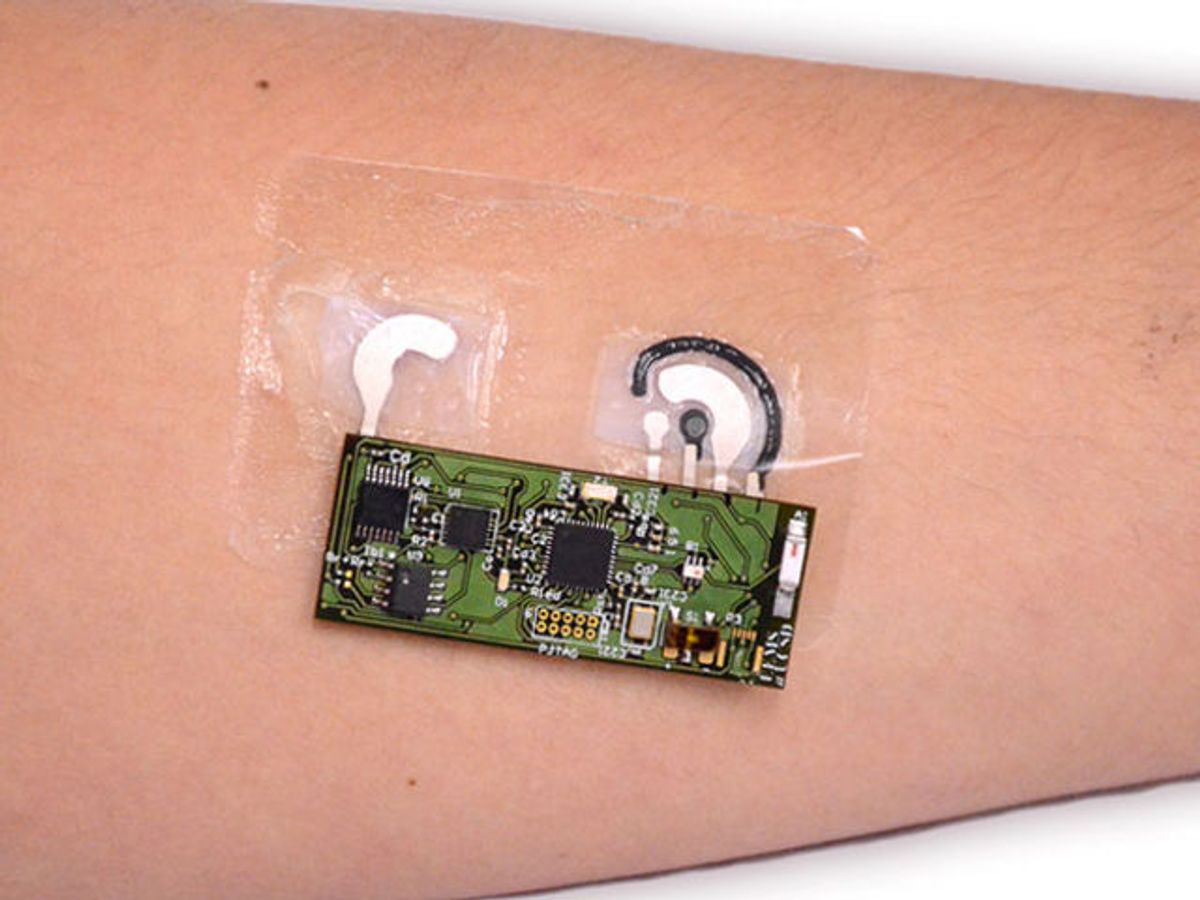Had one too many to drink and need to know if you’re OK to drive home? You might one day be able to stick an electronic tattoo on your arm to tell you. Researchers have made a disposable tattoo-based device that can accurately measure alcohol levels in sweat and relay the results wirelessly to your phone or smart watch.
Blood alcohol concentration is the most accurate way to verify if someone is drunk. Measuring it requires a finger prick, though, so it’s used by law enforcement in extreme cases. Breathalyzers are less invasive, but they can give false positives and “can be spoofed easily,” says Patrick Mercier, an electrical and computer engineering professor at University of California, San Diego. “One rinse with mouthwash can throw them off,” he adds.
A discreet, accurate way to keep tabs on alcohol levels could be used by police officers, bartenders, and college students. It could also give doctors and scientists a reliable way of tracking alcohol levels for research studies.
To this end, the National Institute of Health initiated a Wearable Alcohol Biosensor Challenge in 2015. The winner, announced in May, is a Fitbit-like bracelet that monitors alcohol levels through the skin. The device, made by leading breathalyzer maker BACtrack, uses an electrochemical sensor to measure ethanol molecules emitted through the skin. Many others are making transdermal wristband sensors to track alcohol, glucose, and drugs.
The UCSD researchers took a less bulky approach that could also be less expensive. Mercier, UCSD nanoengineer Joseph Wang, and their colleagues made an alcohol monitoring system that has two parts. One is a temporary tattoo that clings to the skin; Wang’s group has made similar printable tattoo sensors for transdermal glucose and lactate monitoring. The other part is a flexible electronic board that’s smaller than a stick of gum and attaches magnetically to the tattoo.
The researchers screen-printed commercial tattoo paper with silver and silver chloride electrodes that when activated generate a small current for 5 minutes. This triggers a thin gel strip on the tattoo to release a drug that passes through the skin and induces sweat. The sweat comes up to the skin surface and an electrochemical sensor made of an alcohol-sensitive enzyme measures alcohol concentration in the sweat; its output current increases with higher concentration. The electronic board both controls the sensing operation and transfers the results via Bluetooth to the wearer’s mobile device.
Nine healthy volunteers wore the device on their arms before and after consuming alcohol. The numbers accurately reflected the concentration of alcohol in their blood, Mercier says. The results are published in the journal ACS Sensors.
“Right now, the tattoo is designed for one-time use,” he says. “Place, detect, dispose.” Keeping the fancy electronics separate keeps the cost down: The tattoo itself costs only a few cents to make. The team is now working on a tattoo that could continuously track alcohol levels for 24 hours.
Prachi Patel is a freelance journalist based in Pittsburgh. She writes about energy, biotechnology, materials science, nanotechnology, and computing.



